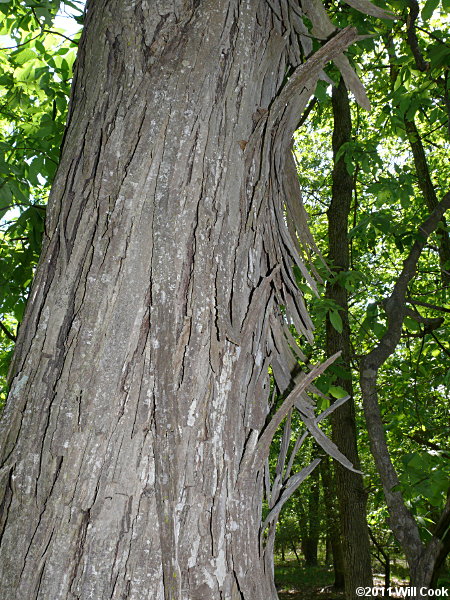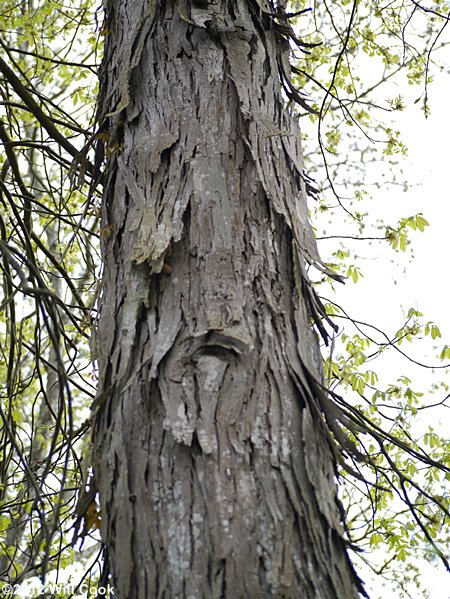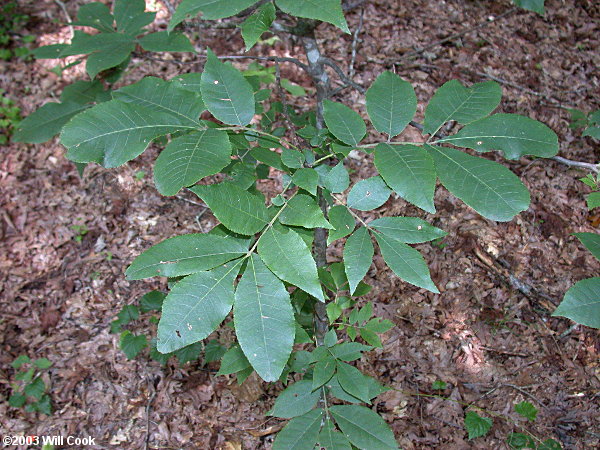
| Carolina Shagbark, also called Southern Shagbark Hickory, is a fairly common to uncommon large hickory of upland flats in the Piedmont of NC. The leaves, with 5-7 leaflets, are not particularly distinctive, but the tree is easy to recognize when mature by the combination of thin, blackish twigs, small buds, and shaggy bark. Durham Co., NC 8/3/2003.
|
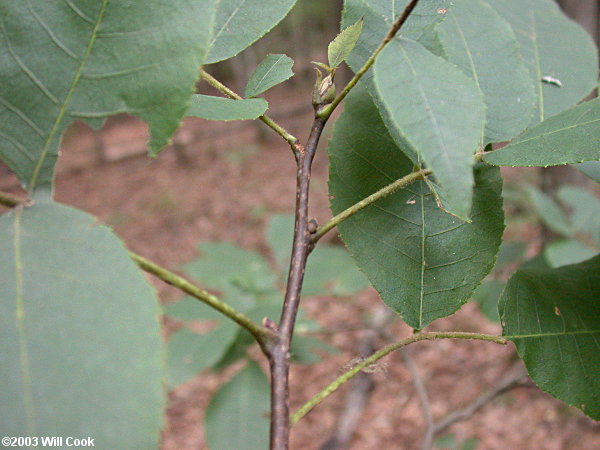
| Young twigs are thin (1-3 mm) and reddish-brown to blackish; Shagbark Hickory (C. ovata) has thick (3-6 mm), tan-gray twigs and larger buds. This distinctive tree is sometimes lumped with or considered a variety (australis) of Shagbark, which it resembles in also having shaggy bark. However, it is quite distinct morphologically and ecologically. Durham Co., NC 8/3/2003.
|
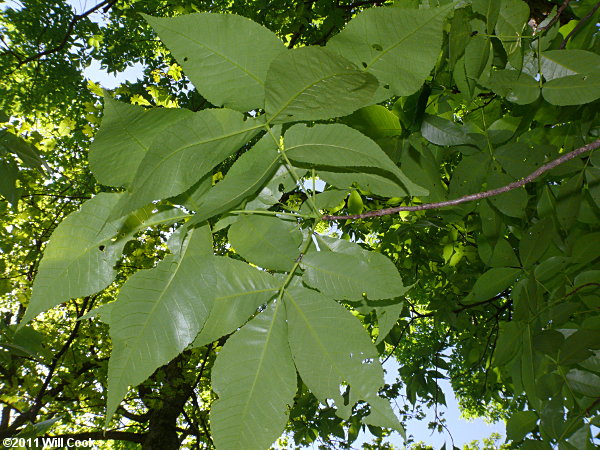
| Stanly Co., NC 4/17/2011.
|
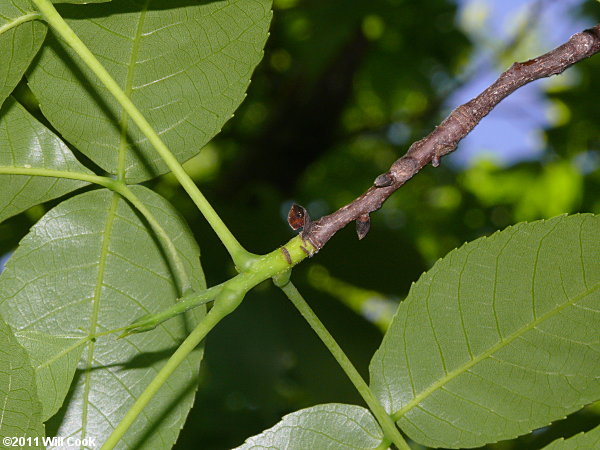
| Young twigs start off green, turning to black with maturity or upon drying. Stanly Co., NC 4/17/2011.
|
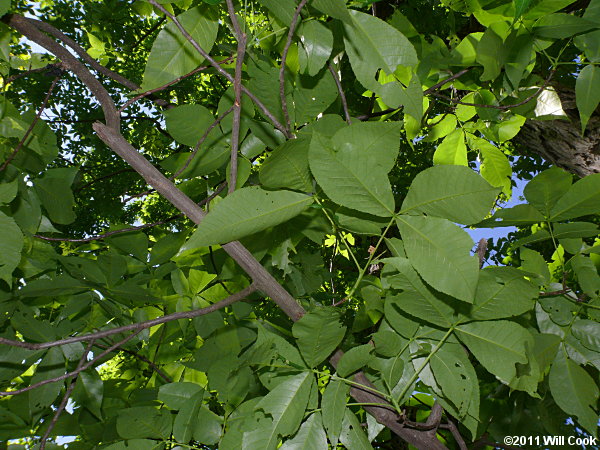
| Stanly Co., NC 4/17/2011.
|
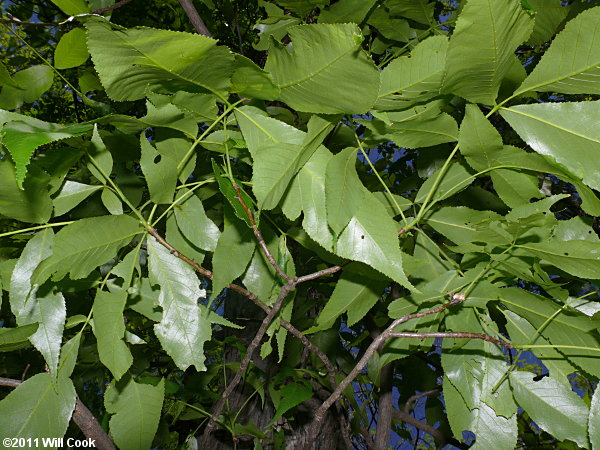
| Stanly Co., NC 4/17/2011.
|
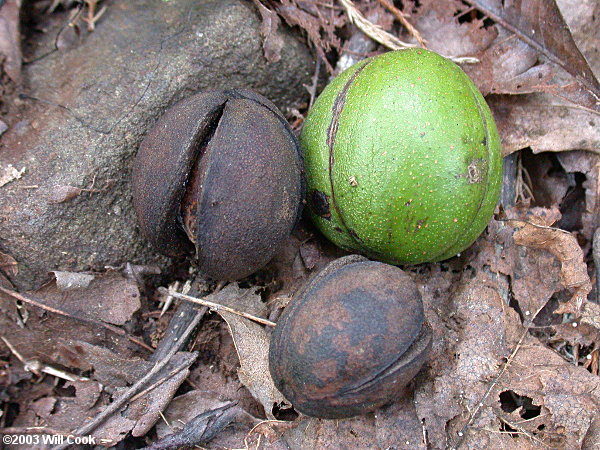
| The husks split to the base. Durham Co., NC 8/3/2003.
|
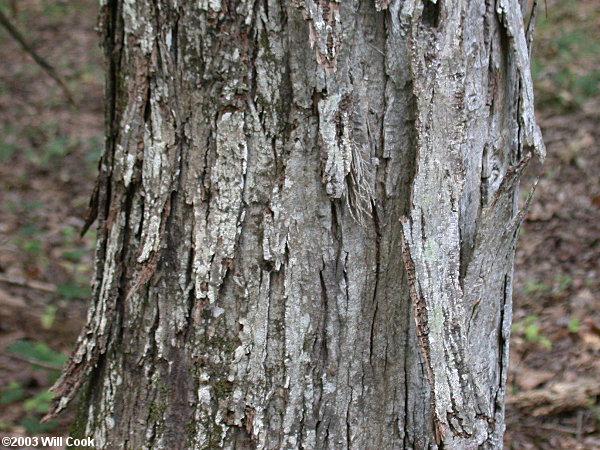
| Shaggy bark of a medium-sized tree. Where present, Carolina Shagbark is often the dominant hickory; it usually does not grow with other shaggy-barked hickories. Shagbark and Shellbark hickories are normally found on moister, more acidic sites. Durham Co., NC 8/3/2003.
|
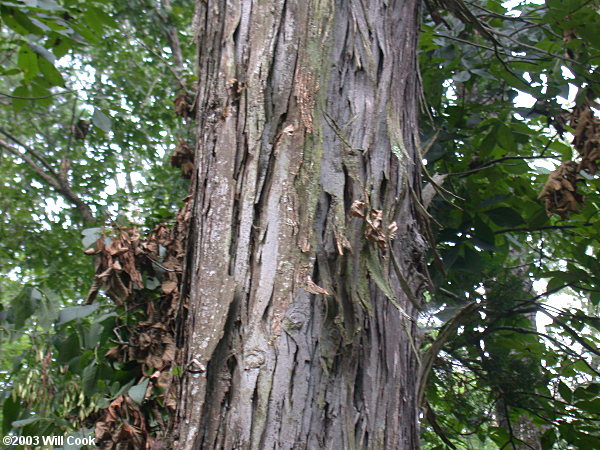
| Shaggy bark of a large tree. The distribution of this species in the state is unusual -- it occurs exclusively in the Piedmont region. Durham Co., NC 8/3/2003.
|
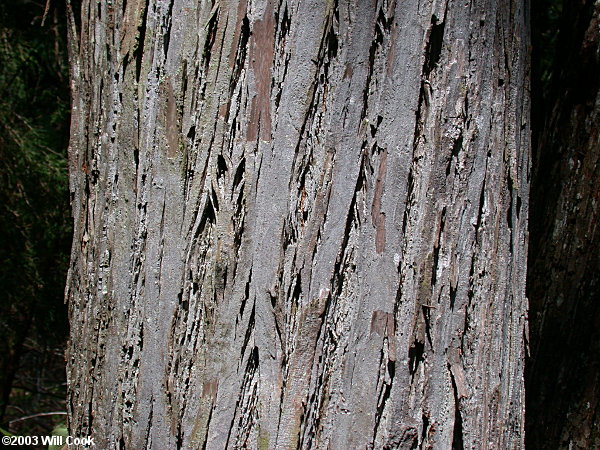
| The bark at the base of large trees may be tighter. This tree is the same one as in the photo above. The specific epithet "carolinae-septentrionalis" means "North Carolina". Durham Co., NC 8/3/2003.
|
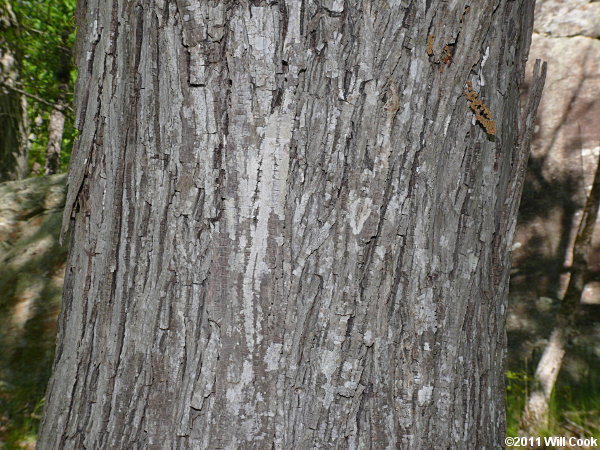
| Stanly Co., NC 4/17/2011.
|











